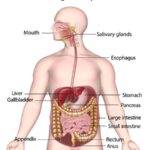Unlocking the Secrets of Post-Workout Recovery: Your Guide to Faster Healing
In the dynamic world of fitness, where every repetition counts and every second can make a difference, the focus often leans heavily towards the workout itself. However,the true magic lies in what happens afterward—the recovery. Just as a well-tailored suit is defined by its fine details, an effective workout routine is incomplete without a thoughtful recovery strategy. whether your a seasoned athlete pushing your limits or a weekend warrior striving for personal bests, understanding the nuances of recovery can significantly enhance your performance and well-being.In this article, we’ll explore an array of practical tips and scientifically-backed techniques to help you bounce back faster after your workouts, allowing you to face each new day with renewed energy and vigor. Ready to unlock your body’s potential? Let’s dive into the art and science of recovery!
Table of Contents
- The Science of Muscle Recovery
- Hydration: The Key to Quicker Healing
- Nutrition Matters: fueling Your Recovery
- the Role of Sleep in Athletic Performance
- Active Recovery techniques to Incorporate
- Stretching and Mobility Exercises for Optimal Recovery
- Listening to Your Body: signs You Should Rest
- Supplements and Ergogenic Aids for Enhanced Recovery
- Creating a Personalized Recovery Routine
- Mental Strategies for a Faster Comeback
- The Importance of consistency in Recovery Practices
- Q&A
- the Conclusion

The Science of Muscle Recovery
recovery from intense workouts is not just a matter of resting; its a complex physiological process that allows your muscles to repair and strengthen. During exercise, tiny tears occur in muscle fibers, and it is during recovery that the body rebuilds these tissues, leading to muscle growth and improved performance. Understanding this mechanism can help you optimize your recovery strategy and enhance your overall fitness journey.
Nutrition plays a decisive role in muscle recovery. Consuming protein after exercise aids in muscle repair, while carbohydrates replenish glycogen stores depleted during your workout. Including a balance of healthy fats can also support overall recovery by reducing inflammation. Consider the following foods that can enhance your recovery nutrition:
- Lean meats: Chicken, turkey, and fish provide high-quality protein.
- Plant-based sources: quinoa,beans,and lentils are excellent for protein and nutrients.
- Fruits and veggies: Antioxidant-rich options like berries and leafy greens help combat exercise-induced oxidative stress.
Moreover, proper hydration is crucial. Water loss through sweat can impair recovery by preventing efficient nutrient transport to muscles. Electrolytes, such as sodium and potassium, are also vital to restore balance in your system post-exercise.Monitor your hydration levels through simple methods:
| Hydration Indicators | Action |
|---|---|
| Dark urine | Increase fluid intake |
| Thirst | Drink water or electrolytes |
| Fatigue | Assess hydration levels; drink fluids |
Incorporating rest and active recovery days into your routine is essential. While complete rest from workouts allows your muscles to heal, active recovery—such as light jogging, yoga, or stretching—promotes blood flow, which can help alleviate soreness and speed up the recovery process. Listening to your body and adjusting your activity levels based on how you feel can lead to better outcomes.
consider integrating recovery modalities into your routine. Methods like foam rolling, ice baths, or even advanced techniques such as compression therapy can contribute to reducing soreness and enhancing recovery time. Find what works best for your body and remember, prioritizing recovery can ultimately lead to improved workout results and a lower risk of injury.

Hydration: The Key to Quicker Healing
Staying properly hydrated is crucial for anyone looking to enhance their recovery after intense workouts. Water plays an essential role in various bodily functions, including nutrient transport and temperature regulation, both of which are vital when you’re pushing your body to its limits. when you’re well-hydrated, your muscles can recover more quickly and efficiently from the stresses of exercise.
During physical activity, especially at high intensities, your body loses fluids through sweat. This loss can significantly impact performance and recovery if not addressed. Without adequate hydration, your body is unable to flush out toxins and repair tissues as effectively. To optimize your recovery,aim to drink water consistently before,during,and after your workout.The general advice for daily water intake is:
| Situation | Recommended Intake |
| Before Exercise | 16-20 oz, 2-3 hours prior |
| During Exercise | 7-10 oz, every 10-20 minutes |
| After Exercise | 16-24 oz, within 30 minutes |
In addition to plain water, there are other hydration options that can speed up recovery. Consider incorporating electrolyte-rich beverages such as coconut water or sports drinks, especially after prolonged or strenuous exercise. These drinks not only replenish lost fluids but also restore essential minerals lost through sweat,such as sodium and potassium,that are vital for muscle function and recovery.
Another aspect to keep in mind is the color of your urine as an indicator of hydration levels. Clear or light yellow urine typically signifies adequate hydration. Conversely,darker shades may indicate dehydration,which could slow down recovery processes. Monitoring your hydration status can help ensure that you’re taking the necessary steps to facilitate faster healing and improved overall performance.
remember that hydration isn’t just about fluid intake; it also involves maintaining a balanced diet rich in fruits and vegetables that naturally contain high water content. Foods such as cucumbers, watermelon, and oranges can contribute to your hydration goals while providing essential vitamins and minerals that support recovery. By prioritizing hydration along with proper nutrition, you set the stage for a quicker and more effective recovery journey.

Nutrition Matters: Fueling Your Recovery
Optimizing your nutrition is crucial for accelerating recovery after intense workouts. The right blend of nutrients helps repair muscle tissue, replenish energy stores, and support overall well-being. When creating your post-workout meal plan, focus on incorporating a mix of macronutrients and micronutrients to effectively fuel your recovery.
Protein plays a pivotal role in muscle repair and growth. Consuming adequate amounts shortly after exercising can significantly enhance recovery rates. aim for a post-workout intake that includes:
- Chicken or turkey breast
- Fish, especially salmon or tuna
- Legumes like chickpeas or lentils
- Greek yogurt or cottage cheese
- Eggs, which are rich in amino acids
In addition to protein, carbohydrates are vital for replenishing glycogen stores that get depleted during workouts. Including a combination of simple and complex carbs can be beneficial. Consider adding the following options to your recovery meals:
- Whole grain bread or wraps
- Quinoa or brown rice
- Fruits like bananas and berries
- Vegetables, especially starchy ones like sweet potatoes
Don’t overlook the importance of hydration and electrolytes. Replenishing lost fluids is essential for optimal recovery. Incorporate drinks rich in electrolytes,such as coconut water or specialized drinks,alongside plain water. This will enhance your body’s ability to process nutrients efficiently.
To summarize your nutritional strategy, consider using the following table to highlight essential recovery foods and their benefits:
| Food | Nutritional Benefit |
|---|---|
| grilled Chicken | High protein for muscle repair |
| Quinoa | complex carbs for energy recovery |
| Greek Yogurt | Probiotics for gut health |
| Banana | Rich in potassium for electrolyte balance |

The Role of Sleep in Athletic Performance
Adequate rest is essential for athletes looking to maximize their potential. During sleep, the body undergoes critical repair processes that directly impact performance. Muscle growth, energy restoration, and hormonal balance occur predominantly during deep sleep stages. Without sufficient quality rest, these processes become impaired, leading to decreased performance and increased risk of injury.
One of the key aspects of sleep’s influence on athletic performance is its role in recovery. During sleep, the body releases growth hormone, which is vital for muscle repair and growth. This hormone helps to repair the micro-tears in muscle fibers caused by intensive training. Athletes who skimp on sleep may experience slower recovery times, resulting in diminished strength and endurance for their next training session.
Moreover, sleep contributes to cognitive functions essential for athletes. A well-rested brain enhances reaction time, decision-making skills, and overall focus during training and competition. Lack of sleep can lead to decreased alertness,sluggishness,and impaired judgment,which can ultimately hinder an athlete’s performance. Ensuring adequate sleep can sharpen mental acuity, providing a competitive edge.
Consider the following tips to optimize sleep quality:
- Establish a Consistent Sleep Schedule: Go to bed and wake up at the same time each day to regulate your body clock.
- Create a Restful Environment: Ensure your sleep space is dark, quiet, and temperature-controlled.
- Limit Screen Time: Reduce exposure to screens at least an hour before bedtime to minimize blue light interference.
- Practice Relaxation Techniques: Engage in meditation or deep-breathing exercises to help ease stress and promote better sleep.
Understanding how sleep affects your training regimen can directly influence your recovery and overall athletic performance. Athletes should prioritize their nightly rest just as much as their training and nutrition. A strategic focus on sleep can transform a passive recovery process into a proactive one, leading to enhanced physical and mental capabilities.
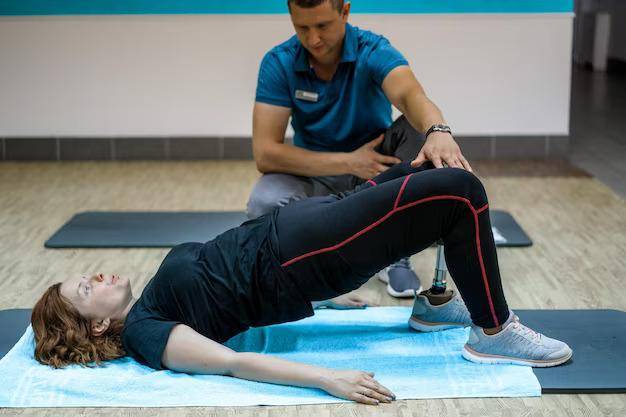
Active Recovery Techniques to Incorporate
Active recovery plays a crucial role in helping your body bounce back after intense workouts. Instead of simply resting, engaging in low-intensity activities can enhance blood flow, promote healing, and reduce muscle soreness. Consider incorporating these techniques into your routine:
- Walking: A leisurely stroll can be incredibly effective. Aim for 20-30 minutes to help your muscles recover while keeping your heart rate stable.
- Yoga: Gentle stretches and poses improve flexibility and encourage relaxation. Plus, the focus on breathwork can help alleviate stress.
- Swimming: The buoyancy of water reduces strain on your joints.A light swim engages your muscles without the pressure of your body weight.
- foam Rolling: Use a foam roller to target tight muscles.This self-myofascial release technique helps increase blood flow and decrease soreness.
- Light Cycling: Riding a stationary bike at a low intensity can stimulate circulation in your legs, speeding up recovery time.
To quantify the benefits of these activities, you may find it helpful to track your progress. below is a simple comparison chart highlighting how different active recovery methods can affect muscle recovery:
| Recovery Method | Duration | Benefits |
|---|---|---|
| Walking | 20-30 mins | Increases blood flow, eases tension |
| Yoga | 30-60 mins | Enhances flexibility, reduces stress |
| Swimming | 20-40 mins | Reduces impact, promotes relaxation |
| Foam Rolling | 10-20 mins | Releases muscle tightness, improves mobility |
| Light Cycling | 30 mins | Stimulates circulation, easy on joints |
When you integrate these active recovery techniques into your post-workout regime, you not only expedite muscle recovery but also enhance your overall fitness journey.Remember, the key is to listen to your body and choose the activities that feel right for you. Balancing intensity and recovery is essential for achieving your fitness goals without risking injury.
Additionally, hydration plays a pivotal role in active recovery. Ensure you’re replenishing fluids lost during workouts. Incorporate electrolytes into your hydration routine, especially after intense training sessions. Staying well-hydrated supports muscle function and aids in the recovery process.
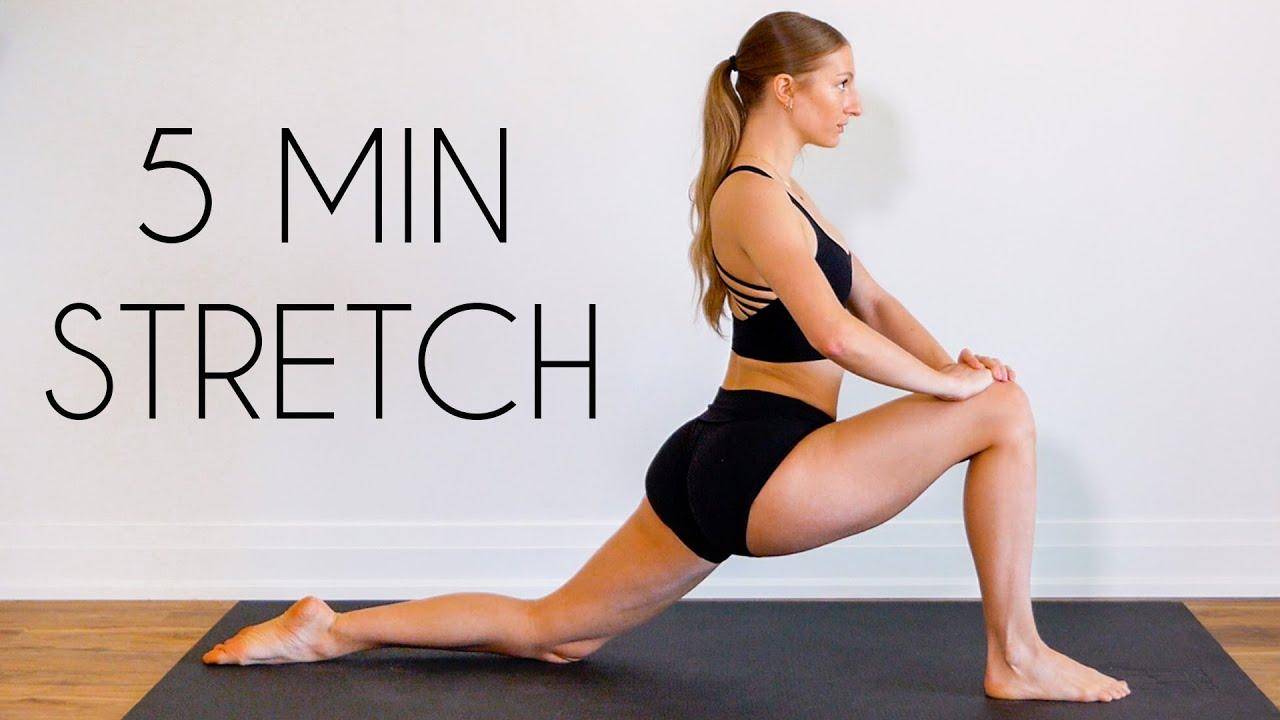
Stretching and Mobility Exercises for Optimal Recovery
Incorporating stretching and mobility exercises into your post-workout routine can significantly enhance your recovery process. These activities improve circulation, reduce muscle tightness, and promote flexibility, all essential for getting back to peak performance sooner.Consider the following exercises to make the most of your recovery:
- Dynamic Stretching: Before workouts, engage in dynamic stretches like leg swings or arm circles to prepare your muscles.
- Static Stretching: After workouts, hold stretches such as the seated hamstring stretch or quad stretch for 20-30 seconds to alleviate tension.
- Foam rolling: Use a foam roller on sore areas such as your back, thighs, and calves to release muscle knots.
- Yoga: Incorporate yoga poses such as Downward Dog or Child’s Pose to enhance both flexibility and relaxation.
- Mobility Drills: perform drills like hip openers or thoracic spine rotations to improve joint movement and reduce stiffness.
To track your stretching and mobility practices, consider setting a schedule that allows ample time for these exercises. A simple weekly routine can boost your recovery rate and keep you on track with your fitness goals. Below is an example of how you might organize your week:
| Day | Focus | Duration |
|---|---|---|
| Monday | Dynamic stretches | 10 minutes |
| Tuesday | Yoga session | 30 minutes |
| Wednesday | Static stretching | 15 minutes |
| Thursday | Foam rolling | 20 minutes |
| Friday | Mobility drills | 15 minutes |
Regular practice of these techniques will cultivate a habit that not only enhances recovery but also fosters overall body awareness. Consistent stretching can lead to improved posture and a greater range of motion in daily activities. Listen to your body and adjust the intensity of your sessions to match your personal needs.
moreover, always remember to breathe deeply during your stretches. Proper breathing aids in relaxation and further enhances the effectiveness of your stretching routine. By embracing these recovery strategies, you’ll gradually develop a more resilient body ready to tackle your next workout challenge.

Listening to Your Body: Signs you Should Rest
Understanding when to step back and give your body the rest it deserves is vital for recovery and long-term performance.Here are some tell-tale signs indicating that it might potentially be time to take a break.
Unexplained Fatigue: Feeling consistently tired, even after a full night’s sleep, can be a sign that your body is not recovering adequately. This type of fatigue may indicate that your muscles are overloaded and need time to heal.
Persistent Muscle Soreness: While some soreness is normal, persistent aching or stiffness in your muscles can signal that you are pushing your body too hard. If soreness lasts more than 72 hours after a workout, it might potentially be wise to reconsider your routine.
| Symptom | Action |
|---|---|
| Unexplained Fatigue | Take a few days off to recharge |
| Persistent Muscle Soreness | Incorporate more active recovery |
| Increased Irritability | Practice stress-relieving activities |
| Sleep Disturbances | Establish a calming bedtime routine |
| Reduced Performance | Reevaluate training intensity |
increased Irritability: Mood swings and irritability can be subtle hints that your body needs a break. High levels of stress hormones can impact not only your physical state but also your mental well-being.Taking time to rest can definitely help stabilize your mood and improve overall performance.
Sleep Disturbances: If you find yourself unable to fall asleep or stay asleep, this could be a sign of overtraining.Recovery allows for improved sleep, which is essential for muscle repair and overall health. Quality sleep is a critical component of any accomplished recovery plan.
Reduced Performance: If you notice a decline in your performance despite maintaining your training intensity, consider that your body may be signaling the need for more rest. Listen to these cues; resting can be just as crucial as the workouts you complete.

Supplements and Ergogenic Aids for Enhanced Recovery
Enhancing recovery after workouts can be a game-changer for those serious about their fitness journey. Various supplements and ergogenic aids are available that not only support muscle repair but also optimize recovery time,allowing you to get back to training faster.Incorporating the right supplements can lead to improved performance in subsequent workouts.
Protein Powders: One of the most well-studied supplements, protein powder, comes in various forms such as whey, casein, or plant-based options. Consuming protein post-workout aids muscle protein synthesis, which is critical for recovery. Consider the following:
- Whey Protein: Speedy absorption, ideal for post-workout.
- Casein Protein: Slow digestion, perfect for nighttime recovery.
- Plant-Based Proteins: Good alternatives for vegetarians and vegans.
Branched-Chain Amino Acids (BCAAs): Another popular choice among athletes, BCAAs comprise three essential amino acids—leucine, isoleucine, and valine—that play a significant role in muscle recovery. By supplementing with BCAAs, you can:
- Reduce muscle soreness
- Minimize muscle breakdown
- Support lean muscle maintenance
Electrolytes and Hydration: Maintaining proper hydration levels is vital for recovery. electrolyte supplements help replenish minerals lost through sweat, aiding in muscle function and reducing fatigue. Focus on:
| Electrolyte | Benefit |
|---|---|
| Potassium | Regulates fluid balance |
| Magnesium | Aids muscle relaxation |
| Sodium | Supports hydration and nerve function |
omega-3 Fatty acids: Known for their anti-inflammatory properties, omega-3s can accelerate recovery and reduce muscle soreness.These can be found in supplements such as fish oil or algae-based options. Including omega-3s in your routine may lead to noticeable improvements:
- Decrease inflammation from intense workouts
- Enhance joint health and mobility
- Stimulate muscle repair processes

Creating a Personalized Recovery Routine
Establishing a customized recovery routine is essential for optimizing your post-workout healing.Everyone’s body responds differently to exercise, which is why tailoring your recovery plan to suit your individual needs can propel your progress. Start by evaluating how your body feels after workouts, identifying any specific areas of soreness or fatigue. This introspection will guide you in selecting the most beneficial recovery strategies.
incorporating active recovery techniques can significantly enhance your recovery process.Here are some effective methods to consider:
- Gentle Stretching: Engage in light stretching sessions to release muscle tension and improve flexibility.
- Low-Intensity Aerobic Activity: Activities such as walking, cycling, or swimming at a low intensity can promote blood flow and prevent stiffness.
- Foam Rolling: Utilize a foam roller to target tight muscle groups, aiding in muscle relaxation and increasing circulation.
Nutritional support plays a critical role in recovery. Your post-workout meal should include a balance of carbohydrates and proteins to replenish energy stores and repair muscle tissue. A simple way to track your dietary intake is by creating a meal plan that emphasizes recovery. Consider the following quick-reference table:
| Food Item | benefits |
|---|---|
| Greek Yogurt | High in protein for muscle repair |
| Banana | Natural source of carbs for quick energy |
| Salmon | Rich in Omega-3s for reducing inflammation |
| Quinoa | Complete protein with essential amino acids |
Adequate hydration is also vital during your recovery phase. Water helps to prevent muscle cramps and flush out toxins that accumulate during exercise. Make it a habit to drink water consistently throughout the day, and especially after workouts, to ensure optimal hydration levels. Consider flavoring your water with electrolytes or natural fruits to make it more appealing.
Don’t overlook the power of rest. Quality sleep is a cornerstone of recovery, allowing your body to heal and regenerate. Aim for 7-9 hours of uninterrupted sleep each night. Establishing a nighttime routine can improve your sleep quality. Strategies to consider include reducing screen time before bed, creating a calming environment, and practicing relaxation techniques, such as meditation or deep-breathing exercises.
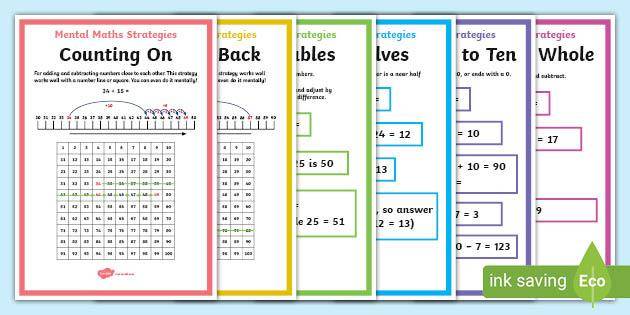
Mental Strategies for a Faster Comeback
Successful recovery from intense workouts involves more than just physical rest; the mind plays a crucial role in enhancing your overall recovery. Utilizing positive mental strategies can significantly boost your resilience and speed up your comeback. By cultivating a proactive mindset, you can not only tackle physical challenges but also enhance your recovery time.
Visualization is one technique that athletes and fitness enthusiasts frequently enough overlook. Imagine yourself recovering successfully after a workout session. Picture your muscles relaxing, your breath returning to normal, and your energy levels rising. This mental imagery can engage your subconscious, fostering a belief that recovery is achievable and near. Incorporate this visualization into your post-workout routine, spending a few minutes picturing yourself at your best.
Another effective strategy is to practice mindfulness meditation. This helps in not just reducing stress but also in connecting you more deeply with your body. By focusing on your breathing and tuning in to how your muscles feel after training, you can foster a sense of awareness that encourages relaxation. This awareness extends to recognizing signs of fatigue and understanding when to push further or rest.
The power of affirmations can also be harnessed to enhance recovery. Repeating positive statements such as “My body is healing,” or “I am stronger than my fatigue,” can reinforce a recovery-focused mindset. write down these affirmations and incorporate them into your daily routine, reciting them during cool-downs or when you feel the urge to skip recovery time.
creating a strong support system can greatly affect your mental state during the recovery process. Engage with fellow fitness enthusiasts or join a community where members support each other’s recovery journeys. Share experiences, discuss challenges, and celebrate victories together.The knowledge that you are not alone and that others understand your journey can motivate you to prioritize recovery.
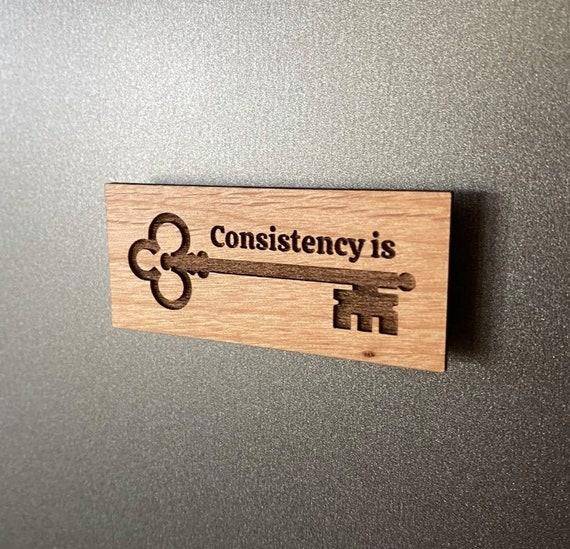
The Importance of Consistency in Recovery Practices
When it comes to recovery, establishing a steady routine can make all the difference. Consistency in recovery practices ensures that the body has adequate time to repair and strengthen muscles that were broken down during intense workouts. This process not only enhances physical performance but also minimizes the risk of injury, allowing individuals to train harder and longer.
Adhering to a predictable recovery schedule enables athletes to take advantage of their body’s natural rhythms. As an example, the timing of nutrition, hydration, and sleep can significantly influence recovery outcomes. Engaging in mindful habits such as:
- Post-workout nutrition: consuming protein and carbohydrates within 30 minutes after exercising.
- Hydration strategies: Incorporating electrolyte drinks during and after workouts.
- Sleep routines: Prioritizing 7-9 hours of quality sleep each night.
Following these practices regularly can help optimize recovery and improve overall workout performance.
Additionally, varying recovery techniques is essential for sustaining consistency over time. Incorporate different modalities such as:
- Active recovery: Engaging in light activity on rest days (e.g., walking, cycling).
- Stretching and foam rolling: implementing dynamic and static stretching routines to enhance flexibility and reduce muscle soreness.
- Cold therapy: Using ice baths or cooling gels to minimize inflammation.
By diversifying recovery practices,individuals can keep their routines fresh and effective,while also addressing their physical needs holistically.
| Recovery Practice | Frequency | Purpose |
|---|---|---|
| Stretching | Daily | improve flexibility and reduce tension |
| Foam Rolling | 3-4 times a week | Release muscle tightness |
| Cold Therapy | After intense workouts | Minimize inflammation |
Moreover, tracking recovery metrics can definitely help individuals gauge the effectiveness of their practices. By maintaining a recovery journal or utilizing fitness apps, one can monitor factors such as:
- Sleep quality and duration
- Daily energy levels
- Muscle soreness and fatigue
These insights allow for tailored adjustments to recovery routines, fostering a proactive approach that champions both physical and mental well-being throughout the fitness journey.
Q&A
Q&A: How to Recover Faster from Workouts
Q1: Why is recovery crucial after workouts?
A1: Recovery is crucial because it allows your muscles to repair and grow stronger, replenishes energy stores, and helps prevent injuries. Proper recovery can also reduce soreness, improve performance, and keep you motivated to maintain your workout routine.
Q2: What are some effective strategies to speed up recovery?
A2: Several strategies can enhance recovery, including proper hydration, nutrition rich in protein and carbohydrates, and incorporating active recovery activities like light stretching or yoga. Additionally, ensuring adequate sleep and mindfulness practices can play significant roles in optimizing your recovery process.
Q3: How does nutrition impact recovery?
A3: Nutrition fuels the body’s recovery process; consuming the right nutrients post workout can replenish depleted glycogen stores and promote muscle repair. A mix of protein and carbohydrates within an hour after exercising is ideal.Foods like lean meats, whole grains, fruits, and nuts can kickstart your recovery.
Q4: Is stretching critically important after a workout?
A4: Yes, stretching is beneficial as it helps enhance flexibility, reduce tightness, and improve circulation, which can facilitate recovery. Incorporating both static and dynamic stretches into your post-workout routine can promote overall muscle health and alleviate soreness.
Q5: Can I still work out if I’m sore?
A5: While experiencing occasional soreness is part of the muscle-building process, “listening” to your body is key. Light to moderate exercises on sore days, known as active recovery, can promote blood flow and alleviate stiffness. However, if the soreness is intense or accompanied by pain, it may be wise to give your body additional time to heal.
Q6: What role does sleep play in recovery?
A6: Sleep is fundamental to recovery as it’s during this time that your body undergoes repair and regeneration. Insufficient sleep can hamper muscle recovery and hormone balance, affecting performance. Aim for 7-9 hours of quality sleep each night to allow your body to restore itself fully.
Q7: Should I consider supplements for recovery?
A7: While whole foods should be your primary source for recovery nutrition, certain supplements can be beneficial. Options like protein powder, branched-chain amino acids (BCAAs), and omega-3 fatty acids have shown potential in supporting muscle recovery. Always consult with a healthcare professional before starting any supplement regimen.
Q8: How critically important is hydration in the recovery process?
A8: Hydration is vital for recovery. It helps with nutrient transport, regulates body temperature, and prevents muscular cramps. After workouts,replenishing lost fluids is essential; consider drinking water and electrolyte-rich beverages,especially after intense or prolonged sessions.
Q9: Are there any tools that can aid in recovery?
A9: Yes, various tools can assist in recovery, such as foam rollers for self-myofascial release, massage balls, and even compression garments. These tools can alleviate tightness, enhance circulation, and promote relaxation in muscle tissues, speeding up the recovery process.
Q10: How can I stay motivated to prioritize recovery?
A10: Linking recovery to your overall fitness goals can serve as a great motivator. Understand that effective recovery enhances performance, leading to more productive workouts.Keeping a journal to track how recovery techniques improve your performance or adjusting your routine to integrate enjoyable recovery activities can also reinforce the importance of this aspect of fitness.
—
Remember, everyone’s body is different, so it’s essential to find a recovery process that works best for you!
the Conclusion
As we conclude our exploration into the art of recovery, it becomes clear that the journey towards optimal fitness extends far beyond the gym floor. By embracing a holistic approach that marries nutrition, hydration, sleep, and mindful practices, you set the stage for a resilient body and a rejuvenated mind. Remember, recovery is not a mere pause but a vital component of your performance—an investment in your future endeavors.
Whether you incorporate gentle stretches after a workout or schedule time for restorative days,each choice contributes to your overall well-being. So, the next time you lace up your sneakers, remember that every stride towards achieving your fitness goals is complemented by the care you show your body afterward. With patience and consistency, you’ll not only recover faster but also unlock new heights in your personal fitness journey. Here’s to healthier tomorrows—one thoughtful recovery at a time.

